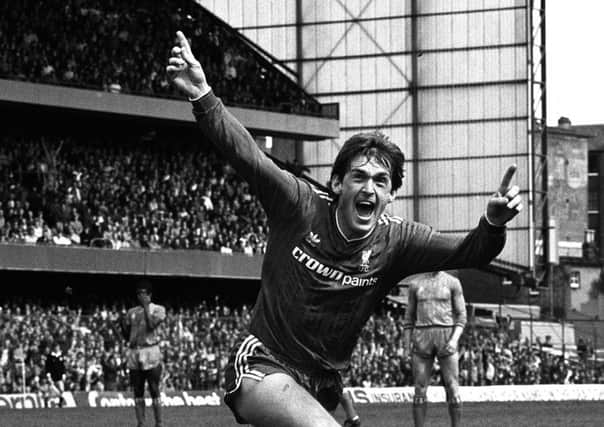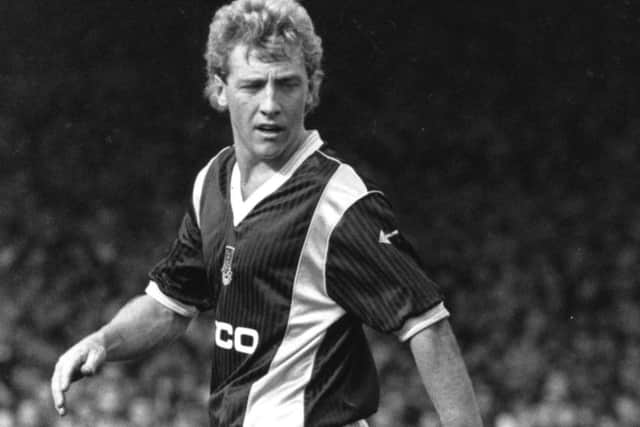Bygones: Football a real turn-off when it kicked off with no screen stars


Whether it be the Premier League or Football League, the competition that until this summer was known as the Conference or even matches from much further afield, there was something for just about everyone during the weekend just passed.
Nottingham Forest got the ball rolling on Friday night when taking on Brighton & Hove Albion at the Amex live on Sky, while over on BT Sport there was a choice between Rangers taking on St Mirren at Ibrox and Lille hosting Paris St Germain.
Advertisement
Hide AdAdvertisement
Hide AdNineteen further live matches followed on the two big satellite channels over Saturday and Sunday from a variety of leagues. It would have been more but the Bundesliga and La Liga do not kick-off until next weekend.


Those unable to afford one TV subscription, never mind two, did not miss out too much, either, thanks to the return of Match of the Day on BBC1 and the brand new Football League highlights show making its bow on Channel 5.
It was a mind-boggling amount of coverage and something that made what happened almost exactly 30 years ago all the more remarkable.
The 1985-86 season was always going to be a difficult season. English football had hit rock-bottom the previous May when the disasters of Bradford and Heysel had claimed 95 lives and left hundreds of others injured.
Advertisement
Hide AdAdvertisement
Hide AdA culture of neglect had played a part in both, while the hooliganism that proved so fatal in Belgium also claimed one other innocent life during that wretched campaign after a teenager was crushed by a collapsed wall during a riot at St Andrews between Birmingham City and Leeds United fans.
No wonder, therefore, that the public had fallen out of love with a game that may have once been beautiful but now possessed the ugliest of faces.
This much was reflected by the combined attendances at the 46 Football League games on the opening day of the new season being the lowest since the Second World War. That, though, was not what made August 17, 1985, remarkable by today’s standards.
Instead, it was how that season kicked off with not one single kick, save or tackle available to armchair viewers.
Advertisement
Hide AdAdvertisement
Hide AdA blackout was in place following a bitter row between the League and the television companies, basically a cartel of ITV and BBC in those days. An offer of £17m spread over four years had been rejected amid a dispute as to the balance between live coverage and highlights.
The clubs, many of whom believed live games seriously impacted on attendances, wanted more of the latter.
The BBC and ITV, meanwhile, understandably favoured more live matches. The impasse that followed meant a new season kicked off for the first time in 21 years without any cameras present and it was the viewing public at home who missed out.
Manchester United set the tone for a truly dramatic campaign with a blistering start that brought 10 straight wins and top spot in Division One.
Advertisement
Hide AdAdvertisement
Hide AdNineteen years on from their last title, the Red Devils looked a shoo-in to finally end that barren run after opening up a 13-point lead over reigning champions Everton and a 10-point advantage on second-placed Liverpool.
What could go wrong? Plenty, actually, as Ron Atkinson’s men soon faltered. Still unbeaten after 15 games, United somehow contrived to lose 10 of their remaining 27 fixtures.
Pole position was surrendered in early February and the Old Trafford club eventually faded to finish fourth. It would be another seven years before the title finally returned to Old Trafford.
Elsewhere, Arsenal were so dull under Don Howe that George Graham’s subsequent arrival in March left supporters feeling liberated.
Advertisement
Hide AdAdvertisement
Hide AdThat left free-scoring duo Chelsea and West Ham United as the capital’s main hope of challenging Merseyside’s dominance. And the pair both gave it a hell of a good go.
At Stamford Bridge, John Hollins’s appointment following John Neal’s retirement on health grounds seemed an inspired move.
Things would subsequently go very wrong under the former Cup winner but, for much of 1985-86, he could do no wrong thanks to a strike-force of Kerry Dixon and David Speedie that could not stop scoring goals.
By the turn of the year, Chelsea were second in the First Division and – much to the relief of football fans everywhere – a breakthrough had been made in the row over television rights.
Advertisement
Hide AdAdvertisement
Hide AdDecember was the month that brought the belated agreement that saw the League accept a £1.3m payment for nine First Division and League Cup games.
A separate deal was agreed for the FA Cup, meaning the blackout was able to end in early January with a third-round tie that West Ham won 1-0 against Charlton Athletic.
That tie at Selhurst Park was the first opportunity for all but those who frequented top-flight grounds to see Frank McAvennie in action.
The Scot had been the unexpected big beneficiary from the lack of TV coverage following his arrival from St Mirren the previous summer due to opposition defenders knowing very little about him.
Advertisement
Hide AdAdvertisement
Hide AdAs a result, McAvennie – in tandem with Tony Cottee – was able to take Division One by storm that season and shoot West Ham to within a whisker of the League title.
It was not until the final week, in fact, that the Hammers’ dreams died after a storming run of nine wins from 11 games played between March 29 and April 30.
Unfortunately for the East London club, eventual champions Liverpool were in even more dominant mood as Kenny Dalglish’s side took 31 points from a possible 33 to claim top spot.
The final three of those came courtesy of a final day title-clinching winner by Kenny Dalglish at Chelsea, whose own hopes had died over a remarkable Easter that saw 10 goals conceded and none scored in the space of 48 hours against West Ham and QPR.
Advertisement
Hide AdAdvertisement
Hide AdThe Reds followed that by lifting the FA Cup a week later at Wembley with a 3-1 win over Everton.
That Wembley triumph for the Reds was the last of just 15 games shown live all season.
There were, thanks to the blackout, also less than a dozen highlights’ programmes, while the only game from the continent shown live was Terry Venables’s Barcelona suffering a European Cup final loss against Steau Bucharest.
Quite a contrast from even this last weekend, when games from Switzerland, France, Germany and Scotland vied with the Premier League and Championship for the attention of armchair supporters.
Mind-boggling figures for new tv deals
Advertisement
Hide AdAdvertisement
Hide AdWhen next season kicks off, a new three-year TV contract for the Premier League will see Sky pay around £11m for each of the 126 games that will be shown live.
It is a remarkable figure and one that underlines just how much of a premium top-flight football in this country now carries in the eyes of both Sky and BT Sport, whose 42 live games will come in at around £7.6m each.
Compared to even the deal that is now in its final year, the sums for 2016 to 2019 are mind-boggling. And this is without taking into account the contracts the Premier League has for overseas rights, which will pour even more money into the bulging coffers of the top-flight clubs.
Such riches are a far cry from 50 years ago, when the BBC paid just £5,000 – or a little under £68,000 today when inflation is factored in – for the rights to screen highlights on Match of the Day and all the clubs received around £50 each.
Advertisement
Hide AdAdvertisement
Hide AdBy 1983, this annual payment had risen to £5.2m but it took the creation of the Premier League nine years later to bring a true explosion in value.
Sky, in an attempt to blow all rivals out of the bidding war, paid what was then a huge £191m for the domestic rights over five years – or £0.64m per match.